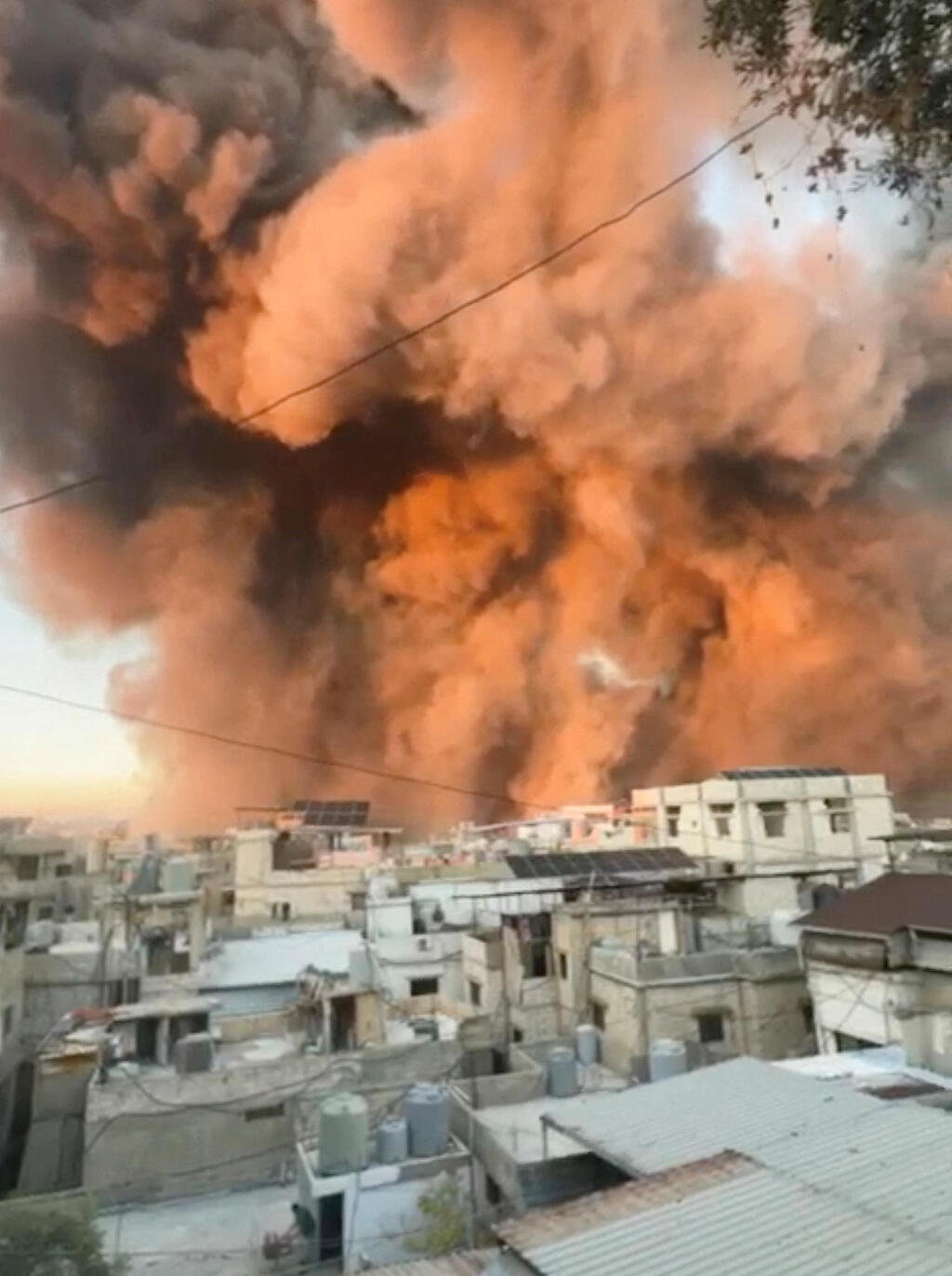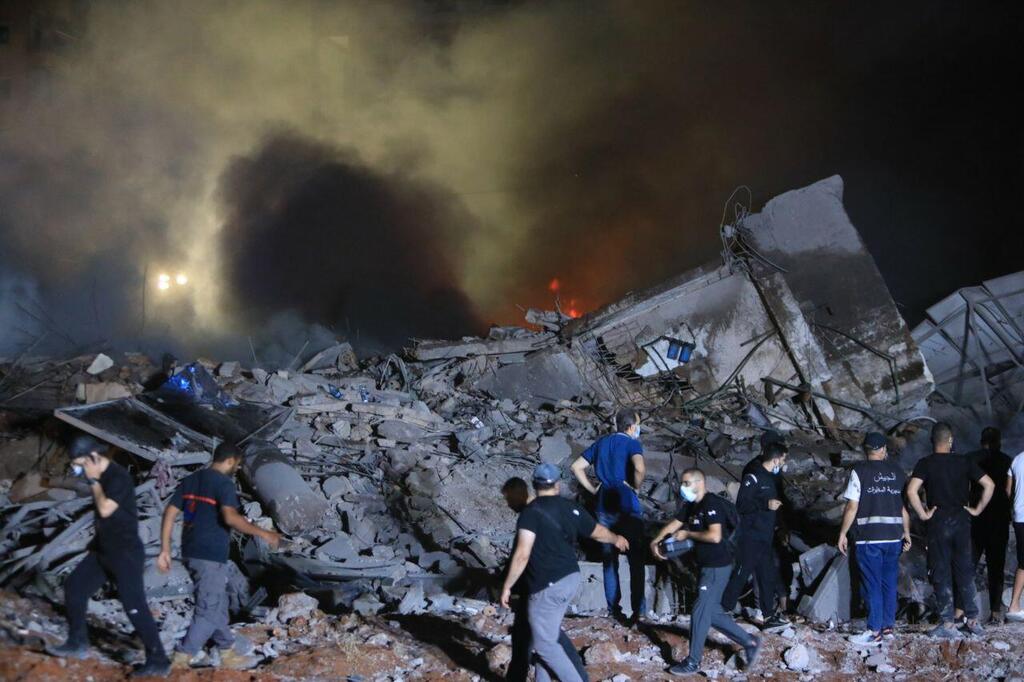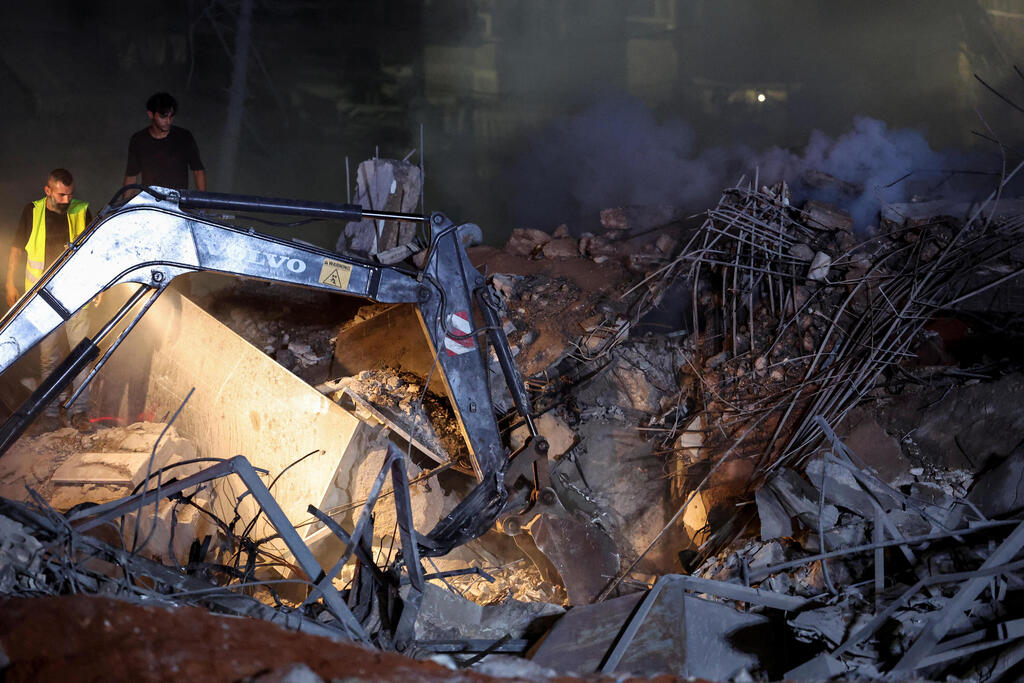Getting your Trinity Audio player ready...
Aftermath of Israeli airstrike on Beirut's Dahieh
“Enough is enough,” Prime Minister Benjamin Netanyahu declared in his speech to the United Nations General Assembly on Friday, without hinting at the imminent military action. Behind the scenes, however, plans for the Israeli strike on Beirut’s Dahieh district had been approved before the Israeli leader departed for the UN. An operational window presented itself, and the final green light was given.
According to a U.S. official who spoke with ABC, Hezbollah leader Hassan Nasrallah and some of his associates were in Beirut for a brief visit when the strike occurred. The official did not confirm whether Nasrallah was at the targeted site, but this may have been the operational opportunity identified by Israeli intelligence. Israeli officials believe Nasrallah was present at the command center, with one saying, “Anyone there could not have survived.”
4 View gallery


Prime Minister Benjamin Netanyahu; Hezbollah leader Hassan Nasrallah
(Photo: Alex Kolomoisky, Ibrahim AMRO / AFP)
Netanyahu, who authorized the strike while in the U.S., abruptly left a press briefing following his speech at the UN General Assembly after being approached by his military secretary. The Prime Minister’s Office later announced that Netanyahu would cut his trip short and return to Israel, departing the U.S. at 3 a.m. Israel time.
IDF spokesperson Rear Admiral Daniel Hagari said in a televised statement that Hezbollah’s central command was located beneath residential buildings in Dahieh.
Hezbollah-affiliated Lebanese network Al Manar reported that at least six buildings were destroyed in the attack. Local reports indicated that around 10 explosions were heard in the Lebanese capital.
Footage from the scene showed extensive damage, with the Lebanese news agency reporting that the attacks created a “belt of fire” from Burj Barajneh to Haret Hreik.
Security sources in Lebanon told Reuters the attack, the most extensive Israeli assault on the southern Beirut Hezbollah stronghold since the war began, targeted an area where top Hezbollah officials are usually based.
Iran's embassy in Lebanon said on X that the strike represents a dangerous game-changing escalation that will "bring its perpetrator an appropriate punishment."
Defense Minister Yoav Gallant, IDF Chief of Staff Lt. Gen. Herzi Halevi and Air Force Commander Maj. Gen. Tomer Bar were in the Air Force command center in Tel Aviv during the attack.
Israel updated the United States about its upcoming operation, but a Pentagon spokesperson denied Washington knew of the strike in Beirut in advance. The spokesperson also said that U.S. Defense Secretary Lloyd Austin spoke with his Israeli counterpart as the operation was ongoing.
Netanyahu, addressing the United Nations earlier Friday, said Israel must defeat Hezbollah and prevent the group from posing a threat along its northern border. “Hezbollah is a terrorist organization that has murdered American, French and other civilians. We will not allow them to sit on our border and plan another October 7,” Netanyahu said. “Israel has no choice—and every right—to eliminate this threat, and that is exactly what we are doing.”
“We have eliminated commanders responsible for the murders of Israelis, Americans, and French citizens, and then we took out their replacements, and their replacements’ replacements,” Netanyahu added. “We will continue our strikes until we achieve all our objectives.”
Friday's attack came on the heels of a spree of assassinations of high-profile Hezbollah commanders and figures.
On Thursday, the IDF killed Hezbollah’s air unit commander Mohammed Srur in Beirut, using three missiles near the site where Ibrahim Aqil, Hezbollah’s head of operations, and other senior Radwan Force commanders were killed last weekend.
On Tuesday, the IDF targeted Ibrahim Qubaisi, Hezbollah’s head of missile operations, in a strike on Dahieh. According to the army, several key commanders in Hezbollah’s missile and rocket divisions were with Qubaisi at the time of the strike.
Earlier this week, the IDF attempted to eliminate Ali Karaki, Hezbollah’s southern front commander and the organization’s third-highest-ranking official. However, Hezbollah announced that Karaki survived and had been moved to a secure location.
In July, Fuad Shukr, described as Hezbollah’s “most senior military commander and head of the group’s strategic operations,” was killed in Dahieh. According to the IDF, Shukr was a close aide and strategic adviser to Nasrallah.








